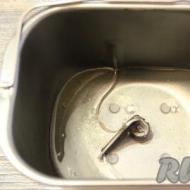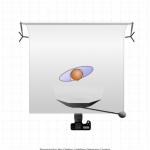
What gearbox is on the audi a4. What is the transmission on the new Audi A4 generation B9. DSG - a robotic version of the Audi A4 gearbox
Question 001:Q: What is DSG? What are DSGs? What is the difference? What cars are installed?
A:DSG ( from him. DirectSchaltGetriebe or English. Direct Shift Gearbox) - a family of preselective robotic transmissions with dual clutches installed on cars of the VAG concern (Audi, Volkswagen, Skoda, Seat).
| Type of | Clutch | Engine location | Engine volumes | Drive unit | Moment | On which car models is it installed |
| DSG70AM (DQ200) | "dry" | transverse | 1.2 -1.8 | front | 250nm | Audi: A1, A3 (8P - until 2013), TT; VW: Golf6, Jetta, Polo, Passat, Passat CC, Scirocco, Touran, Ameo; Skoda: Octavia (1Z - until 2013), Yeti, Superb, Fabia, Roomster, Rapid; Seat: Altea, Leon (1P - until 2013), Toledo. |
| DSG6 02E (DQ250) | "wet" | transverse | 1.4 - 3.2 | front/full | 350Nm | Audi: A3(8P - until 2013), TT, Q3; VW: Golf, Passat, Touran, Scirocco, Sharan, Tiguan; Skoda: Octavia (1Z - until 2013), Yeti, Superb; Seat: Altea, Leon (1P - until 2013), Toledo, Alhambra. |
| DSG7 0B5 (DL501) | "wet" | longitudinal | 2.0 - 4.2 | full | 550Nm | Audi: A4 (until 2015), A5, A6, A7, Q5, RS4, RS5. |
| DSG7 0BT/0BH (DQ500) | "wet" | transverse | 2.0 - 2.5 | front/full | 600Nm | Audi: Q3, RS3, TTRS; VW: Transporter/Multivan/Caravelle, Tiguan. |
| DSG7 0CW (DQ200) | "dry" | transverse | 1.2 - 1.8 | front | 250nm | Audi: A3(8V - since 2013), Q2; VW: Golf7, Passat (since 2015), Touran (since 2016); T-Roc. Skoda: Octavia (5E - from 2013), Rapid (from 2013), Karoq, Scala (from 2019); Seat: Leon (5F - since 2013). |
| DSG6 0D9 (DQ250) | "wet" | transverse | 1.4 - 2.0 | front/full | 350Nm | Audi: A3(8V - since 2013), Q2; VW: Golf7, Passat (since 2015), Touran (since 2016) ; Skoda: Octavia (5E - since 2013), Kodiaq; Seat: Leon (5F - since 2013), Ateca. |
| DSG70DL (DQ500) | "wet" | transverse | 2.0 | front/full | 600Nm | VW: Arteon, Passat (since 2017), Tiguan (since 2016) ; Skoda: Kodiaq. |
| DSG70GC (DQ381) | "wet" | transverse | 2.0 | front/full | 420Nm | Audi: A3 (since 2017), Q2; VW: Arteon, Golf (since 2017), Passat (since 2017); T-Roc. Skoda: Karoq; Seat: Ateca. |
| DSG7 0CK (DL382-7F) | "wet" | longitudinal | 1.4 - 3.0 | front | 400nm | Audi: A4(8W - from 2016), A6(from 2011), A7(from 2016), Q5(from 2013). |
| DSG7 0CL (DL382-7Q) | "wet" | longitudinal | 2.0 - 3.0 | full | 400nm | Audi: A4(8W - since 2016). |
| DSG7 0СJ | "wet" | longitudinal | 2.0 | full (Ulta Quattro, with electromechanical clutch) |
400nm |
Audi: A4(8W - since 2016). |
1. DSG with "dry" clutches, as a rule, are installed on less powerful engines, because. able to "digest" a smaller moment.
2. If you have four-wheel drive, then you have "wet" clutches.
3. If you have a DSG and a motor "along", then you have an Audi :-)
4. Apparently, the age of the legendary Audi Quattro all-wheel drive with the famous Torsen differential is coming to an end..
Question 002:
Q: How can I find out which box is installed on my car?
A: Option 1: Connect the diagnostic tool to the vehicle, go to block 02 - Gearbox electronics and read the identification data. The first three characters of the box and mechatronic identifiers identify your box.
For example: 0AM 300049H - seven-speed DSG with "dry" clutches type 0AM. Or 02E 300051R - six-speed DSG with "wet" clutches type 02E, etc.
Option 2: Look up the vehicle's VIN code in the ETKA electronic parts catalog.
Option 3: Send the vehicle VIN to our address, we will check and send you a reply.
Question 003:
Q: How is S-tronic for Audi different from DSG for Volkswagen / Skoda / Seat?
A:Nothing. With the exception of boxes 0B5, 0CK / 0CL and 0CJ which are installed only on Audi.
Question 004:
Q:What oil is poured into the DSG?
A:For convenience, we have formulated the answer in the form of a table:
| Type of | Oil | Change interval (manufacturer's recommendation) |
| DSG70AM (DQ200) | |
for the entire service life |
| DSG6 02E (DQ250) | Refueling volumes: up to 6.9l - full filling up to 5.5l - oil change Filter element: 02E 305 051 C |
60 000 |
| DSG70B5 | Gearbox oil DSG G 052 529 up to 7.5l - full filling up to 6.7l - oil change Filter element: 0B5 325 330 A |
60 000 |
| DSG7 0BT/0BH (DQ500) | Gearbox oil DSG G 052 182 up to 7.6 - full refueling up to 6.0l - oil change Filter element: 0BH 325 183 B |
60 000 |
| DSG7 0CW (DQ200) | In the box: Gearbox oil G 052 512 - 1.9l In mechatronics: Hydraulic oil G 004 000 - 1l |
for the entire service life |
| DSG7 0D9 (DQ250) | Contents: Gearbox oil DSG G 052 182 Refueling volumes: up to 6.9l - full filling up to 5.5l - oil change Filter element: 02E 305 051 C In dispenser: G 052 145 - 0.9l |
60 000 |
| DSG70DL (DQ500) | Contents: Gearbox oil DSG G 052 182 Filter element: 0BH 325 183 B In handout: G 052 145 | 60 000 |
| DSG70GC (DQ381) | ATF oil: G 055 529 | 60 000 |
| DSG7 0CK (DL382-7F) | ATF oil: G 055 549 A2 4.35l - full filling 3.5l - oil change |
60 000 |
| DSG7 0CL (DL382-7Q) | ATF oil: G 055 549 A2 4.35l - full filling 3.5l - oil change Oil MTF: G 055 529 A2 - 3.8l |
60 000 |
Q:What is mechatronics?
A:Mechatronics (mechatronik, mechatron, valve body, brain) - electronic-hydraulic gearbox control unit. Perhaps the most important, but at the same time the most unreliable node in the entire transmission.
Question 006:
Q:How are mechatronics different?
A:Each type of DSG has its own type of mechatronics. Mechatronics from different DSG types are not interchangeable. Moreover, for some types of DSG, there are several generations of mechatronics, which also differ from each other. And for each type and generation of mechatronics, there are many versions of software designed for different engines and different gear ratios in the gearbox. In some cases, mechatronics of the same type can be reprogrammed (reflashed) for installation on different cars. You can read more about the firmware.
Question 007:
Q:Which DSG is better/more reliable?
A:There is no single answer to this question. Each type of DSG has its own advantages and disadvantages. And the duration of the "life" of any DSG largely depends on the conditions of its operation, such as:
- Ambient temperature. All DSGs do not like overheating, especially DSGs with "dry" clutches, in which the mechatronics have a separate oil circuit and there is no cooling.;
- Driving mode. Those who spend several hours every day in traffic jams are more likely to come to replace the mechatronics than those who mainly drive long distances on the highway;
- Driving style. Those who like to "give a corner" and "light it up at a traffic light" are much more likely to get to replace the clutch and differential than those who prefer a quiet ride.
Question 008:
Q: I have DSG7 0AM.Do I need to switch the selector to neutral when standing at a traffic light or in a traffic jam?
A: No need.Unlike conventional manual gearboxes, the DSG7 0AM has a normally open clutch. And it closes only when the mechatronics begins to push the clutch release rods. When you (or auto-hold) hold the car in place by depressing the brake, the mechatronics clutch rods are retracted and the clutches are disengaged. Accordingly, no load is transferred to the gearbox or clutch. What position the selector lever is in is not important.
Question 009:
Q: Over time, jerks appeared when shifting gears. Previously, the car drove normally, the shifts were smooth, but recentlythere were jerks and bumps when shifting gears. Can this be fixed by reprogramming the box ECU (software update)?
A: No you can't. The software cannot "spoil" over time and cause the CP to malfunction. If the car previously drove correctly, and then stopped, then the problem lies in the hardware, and not in the software.
Reprogramming the mechatronics can only help if you changed the mechatronics and installed the unit with the wrong software. You can read more about reprogramming.
Question 010:
Q:How to find out the software version in mechatronics?
Question 011:
Q: The DSG7 shift knob is locked in the P position, how do I unlock it in order to shiftbox in neutral?
A: Brief instructions for unlocking the DSG7 0AM selector.
Question 012:
Q: Will changing the oil in the DSG7 0AM (0CW) mechatronics help remove the "kicks" on gear shifts?
A: No, it won't help. Such malfunctions are eliminated by repairing the hydraulic part of the mechatronics. In the initial stages, adaptation (basic installation) can help, but rather as an exception than a rule.
Question 014:
Q: After replacing the DSG7 0AM mechatronics, the errors "06247 P1867 - Drive data bus - no messages from the steering column electronics - J527" and "06227 P1853 Drive data bus - invalid message from the ABS control unit" hang in the event recorder. How to remove them?
A:It is necessary to reset information about the installed components (steering column switches, electric parking brake, etc.). To do this, you need to do the basic installation on channel 69. After the basic installation is done, the errors will go from the "permanent" state to the "sporadically" state and can be cleared.
When using VCDS software (VAG-COM, VASYA-Diagnost, etc.):
"02-KP Electronics" -> "Basic parameters - 04" -> In the "Group" field, enter the value 69 -> Click "Read".
When using the softwareVAS-PC:
"Self-diagnosis" ->"02-Gearbox electronics" -> "006-Basic setting"-> In the "Group" field, enter the value 69 -> Press "Q".
When using the softwareODIS:
"Self-diagnosis" ->"02-KP Electronics" ->"Basic installation" ->Enter the value 69 -> Press "Channel Selection".
After completing the basic installation, clear the event recorder.
Question 015:
Q:Structurally, DSG7 0AM and DSG7 0CW are practically the same transmissions (DQ200 family), is there any difference between the mechatronics installed on them?
A:The main difference is the physical and software changes in the electronic control board. In particular, the 0CW boards are linked to the car's immobilizer system. You can read more about the differences in mechatronics 0AM and 0CW.
Cars with CVT transmissions have recently become more popular among our compatriots. This type of gearbox is relatively new, so not every motorist knows about the device and the benefits of using such a unit. What is an Audi A4 variator, what are its design features and disadvantages, we will tell in this article.
[ Hide ]
What type of variator is used on Audi?
The first manufacturers to equip their vehicles with CVTs were Volkswagen and Audi. Audi A4 and A6 models are equipped with Multitronic transmissions. This type of gearbox refers to continuously variable transmissions. Multitronic's customer features are quite high. The A4 and A6 cars are equipped with the “01J” gearbox model.
Transmission CVT Multitronics 01J
Design features of the CVT
If we talk about the design, then the main components of CVTs on Audi are as follows:
- Two "wet" multi-plate clutches. They are used to separate power unit with transmission. According to the clutch device - friction clutches of forward and reverse. By design, these elements look similar to devices used in conventional automatic transmissions. But CVT clutches have certain advantages when compared with a torque converter. For example, they are all smaller, they themselves are compact and easier to manage.
- Planetary reductor. This component is only used for driving in reverse. When the vehicle travels forward, the mechanism is blocked by the forward clutch. And when the driver turns on the reverse gear, the corresponding clutch locks the ring gear of the mechanism to the transmission housing. As a result, the gearbox begins to move in reverse side. The transmission control system limits reverse travel speed.
- Variable transmission. This device is designed to smoothly change the transfer parameter. Its main structural components are driven and driven pulleys, they are connected to each other by a chain. Each pulley is two shafts with a conical surface. The leading element is connected to the crankshaft of the internal combustion engine of the vehicle due to the intermediate gear. And from the driven shaft, the torque is supplied to the main gear. During transmission operation, one of the shafts on the pulley will move, allowing the control system to measure its diameter.
- Metal chain. The manufacturer Audi became an innovator as the first to use a chain in gearboxes. Its use made it possible to increase the range of gear ratios due to a decrease in the contact surface of the chain with the shaft, when compared with wedge-shaped straps. To make the operation of the metal chain less noisy, engineers used links of different sizes in it.
- Pressure and adjusting hydraulic cylinders are installed on each shaft. The adjusting mechanism allows you to adjust the gear ratio, that is, changes the diameter of the shaft. The clamping device performs the function of pressing the chain against the shaft disks. A torque controller is used to ensure optimum clamping force. This sensor is mounted on the drive shaft.
- Differential and main gear.
- A control system is used to ensure the correct operation of the unit. It contains input controllers, a control unit and a hydraulic mechanism that acts as an actuating device. Input controllers are used to evaluate the position of the gear lever, the number of revolutions at the input of the gearbox, as well as at its output. Sensors monitor temperature and pressure levels transmission oil. The control device is designed to select the optimal gear ratio, taking into account the driving conditions and the desires of the driver. In accordance with the data coming from the controllers, the control unit determines the level of oil pressure in the system and implements it by influencing the solenoid valves. The device itself is mounted on the checkpoint. The actuator controls the cylinders, forward and reverse clutches and cools them, changes the oil pressure in the transmission.
- Oil pump. Used to circulate gear oil.
- Ejection pump. This device is used directly for cooling clutches. Its principle of operation is based on the supply of transmission oil due to vacuum. The cooling process is carried out in a heat exchanger, which is part of the motor cooling system.
- According to Audi engineers, the use of Multitronic CVTs made it possible to ensure optimal dynamism when moving the vehicle. With the normal operation of the box, fuel economy is also achieved.
What is the service life?
Before buying a car with CVT, many motorists are interested in the question of how much the CVT runs on average. The resource of operation in vehicles of Audi 2012 or another year of manufacture may be different. It happens that the box serves 40 thousand km, and sometimes it works out 200 thousand kilometers without any complaints. It all depends on the conditions of use and maintenance of the machine. It is precisely because CVTs are very sensitive to misuse that many potential car owners bypass CVT cars.
You can repair the CVT transmission at official dealer or at the service station. Service from the "officials" is relevant if the vehicle is still under warranty. The cost of repairs at the dealer is higher than at specialized service stations.
List of errors
A common type of CVT failure is the failure of the electronic unit. You can try to solve the problem by flashing the device, but the dealer usually changes the ECU. Car owners are faced with the problem of a broken metal chain. "Officers" in such cases change the entire gearbox assembly.
When conducting computer diagnostics of a CVT transmission, you can get error codes that indicate the following problems:
- 17105 P0721 or 17106 P0722 - the output speed sensor has broken, this leads to the absence or supply of an incorrect signal from the control device;
- 17114 P0730 - diagnostics shows an incorrect gear ratio of the computer;
- 17134 P0750 - the ABS / EDS unit has broken or is not working correctly;
- 17137 P0753 - problems in the operation of the electrical circuit of the gearbox;
- 18201 P1793 or 18206 P1798 - the sensor for the number of output revolutions has broken or is not functioning correctly, with such a problem, the signal from the controller will either be incorrect or completely absent;
- 17090 P0706 - the transmission selector position sensor is out of order or not adjusted.
Emergency mode
Why does it turn on emergency mode CVT and how to solve the problem - find out from the review of the car owner on the video (the material was filmed and published by the Cars and Upgrade channel).
In emergency mode, the CVT gearbox works when there are problems in the operation of the control unit, a malfunction in the electrical circuit. If this mode is activated, dashboard the PRND scale will immediately light up. Other symptoms of a malfunction:
- the driver presses the gas pedal, the car starts to jerk;
- when switching gears, the car twitches;
- in some cases it is not possible to activate the reverse speed;
- when the gearbox goes into emergency mode, the car cannot be removed from the parking mode.
Mechanical breakdowns
Mechanical faults include:
- damage to the wiring, open circuit;
- oxidation or damage to the contacts on the sensors or the control unit;
- open metal chain CVT;
- mechanical damage to controllers;
- failure of the control unit as a result of mechanical impact on it, in this case, flashing the device will not help.
An example of what kind of failures can occur in the operation of a CVT gearbox is shown in the video (the material was filmed and made public by the user Ilya Filyaev).
How to change the oil?
Consumable replacement starts with purchase original oil.
For use in Audi CVT gearboxes, General Motors has released a special lubricant, which is called ATF AUDI G052180A2.
If you have difficulty finding the original oil, then it can be replaced with Mobil1 LT71141. This liquid is no worse in quality, but its cost is on average 50% less. The oil should be changed every 60 thousand km. With such a run, the liquid usually already loses its properties. In principle, any other oil can be used, as long as it meets API or SAE standards. When buying lubricant, purchase:
- filtering device;
- sealant;
- rubber gasket for the pallet.
The volume of the canister of purchased oil should be 5 liters.
As for filters, there are two of them in CVT transmissions. One of them is mounted directly in the unit itself, so to replace it, you will need to disassemble the unit. The second filter is a part of the tube connected to the radiator. This nozzle is changed only if it becomes clogged or foreign particles are found in the lubricant.
In addition to the filter and the liquid itself, prepare:
- socket wrench -3357;
- hexagon;
- construction or medical syringe for filling with a special tube;
- clean rag.
Below is a detailed video tutorial on self replacement working fluid in a CVT gearbox (video filmed and published by Artur Prokurov channel).
It is necessary to change the lubricant in a garage with a pit or on a flyover, if possible, use a lift. The vehicle must be level and fixed. The replacement process is as follows:
- Substitute a bowl or an old bucket under the drain hole of the variator box, into which the "working out" will be collected. If you drove the car on a lift, you can additionally flush the gearbox. To do this, start the car engine, set the gearshift lever to the “Tiptronic” position, that is, to the manual gearshift mode. From the first gear, in turn, shift to the highest gear, giving gas when switching the selector to each subsequent mode. The speed should not exceed 50 km/h. After that, apply the brake, set the variator lever to position R and accelerate to 20 km / h. Apply the brake again and set the selector to mode D. This procedure should be repeated five times, and then set the lever to position P, and turn off the engine.
- When the motor cools down a bit, you can start replacing. Get under the bottom of the car. There you will see two plugs on the transmission. These are the drain and filler holes, which are also used to control the level of lubricant. The drain plug is usually made of aluminum, when unscrewing it, be careful not to damage the threads. After unscrewing the cover, the process of draining the oil from the variator will begin. In total, approximately five liters should come out of the system. Be careful not to get the lubricant on your skin.
- After draining the consumable from the gearbox, unscrew the bolts that fix the pan. After dismantling, remove metal particles from the magnet. After removing the wear products, degrease the bottom of the pan with a solvent, remove the old gasket and clean the place for the new one.
- Remove the filter element and seal from the gearbox. After that, install the pallet itself in place. Screw the drain plug together with a new o-ring.
- Then unscrew the screw or plug from the control hole.
- First, pour new oil into the syringe and connect a pre-prepared tube to it. Pour the consumable in small doses through the control hole into the gearbox. Pour oil until it starts to overflow. On average, an Audi CVT gearbox contains about 4.5 liters of fluid.
- Replace the filler cap and start the engine. It should run for a few minutes, after which it should increase its speed to 2500.
- Please note that the level of consumables in the gearbox depends on the temperature of the gearbox. Therefore, if possible, connect a computer with specialized software to the diagnostic connector and check the temperature level. The parameter to be checked should be no more than 30-40 degrees. At a lower temperature, you can pour the liquid, and at a high temperature, you can underfill. Both are dangerous for the gearbox. Therefore, after filling, it is necessary to check the level of lubrication in the gearbox with your own hands. If necessary, add oil to the system without turning off the engine. As you remember, oil is poured until it flows out of the control hole. Screw on the lid.
- Press the brake pedal and alternately switch all gear modes. Hold each one for a few seconds. Check the level again.
- Good car dynamics. A vehicle can accelerate an order of magnitude faster than a car with automatic transmission.
- Driving a car with CVT is generally smoother. Due to the lack of gears, there are no jerks when switching them.
- Profitability. CVT cars usually use less fuel than automatic cars.
- Control capability vehicle both in automatic mode and in manual mode. If the driver gets tired of the automatic transmission, he can switch to manual control and independently change gears according to his needs.
Main disadvantages:
- Reliability CVT leaves much to be desired. If you are wondering if the CVT is reliable, then as we said, this type of gearbox often fails. Moreover, it can break even after 40 thousand kilometers. The weak point of CVT gearboxes is the control unit.
- Complicated and expensive service. CVT transmissions are not as widely used as "automatic". Accordingly, they are not yet as well studied by specialists at service stations. Therefore, the repair of such gearboxes is usually carried out only by authorized dealers.
- One of weaknesses variator - chain. As a rule, its resource is about 100-150 thousand kilometers. But it happens that it wears out earlier. And replacing it is not cheap.
- CVT gearboxes require special lubrication. Moreover, a specific oil must be used for each car model with CVT. Price Supplies rather big, and it is impossible to use unsuitable liquids.
Many drivers know how to drive an Audi A4 automatic box. But for some, our article will serve as a small introductory lesson on the topic of studying the automatic transmission of this well-known automaker.
A bit of the history of the Audi brand.
Father and inspiration car brand Audi is Ferdinand Piech, who in 1974 took over as head of the company's advanced development department. Being not only a talented designer, but also a competent, perspicacious marketer, Pih managed to convince the company's management of the need to radically change the company's position in the market.
He began developing a four-wheel drive passenger car, experimenting with aluminum, and in 1980, Audi surprised car enthusiasts around the world by introducing an all-wheel drive sports coupe at the Geneva Motor Show. Audi Quattro. This model was truly revolutionary, because before that all-wheel drive was the privilege of trucks and SUVs. For Pich, it was a kind of experiment that fully justified his expectations. Continuing to develop the concept of all-wheel drive in cars, he releases in 1984 the Audi 90, which was designed only for sales in the United States, and its European counterpart, the Audi 80.
Audi Quattro 1980
The Audi 100, which was released in 1990, became the most expensive model of the automaker. This is the first car that Audi has made its presence known in the premium class. Wealthy customers could purchase a model with a new six-cylinder V-type engine, which was the lightest and most compact among similarly powerful counterparts.
 Audi 100
Audi 100 Thanks to new system fuel injection and other innovative solutions, Audi engineers managed to remove 174 full-fledged horsepower. At the same time, the new engine retained more power even at high speeds.
New representative in the lineup
Continuing to conquer the elite segment of the car market, the automaker releases the Audi A8 sedan in 1994. The heavy and powerful executive class car was popular due to the increased stability (and hence safety) provided by the same all-wheel drive.
In 1996, the company presented the world with a compact Golf class car - the Audi A3.
 Audi A8
Audi A8 The development costs of the model turned out to be minimal, since the production of this car was based on the ready-made VW Golf platform. However, thanks to the sporty style and high quality interior, the class of the car turned out to be a step higher, which brought it closer to competitors from Mercedes and BMW.
For a long time, Audi did not offer anything worthy to SUV lovers, while the company's competitors already offered their customers several models of cars of this class. The Q7 SUV, which appeared in 2005, made up for this delay by instantly gaining popularity among admirers of giant cars.
Model A4.
The successor to the Audi 80, which was produced from 1986 to 1994, is the A4 model, which entered the series from November 1994. The car has acquired a more rapid outline of the body, and the magnificent interior of the cabin conquers with its comfort. Along with this, the new model has a number of improvements regarding passive safety: the car holds a blow to the side pillars better, two side airbags have been added to the basic configuration (in addition to the two front ones)
 Audi A4 1994
Audi A4 1994 Motorists can order this model in one of several variations:
- 1.6 or 1.8-liter petrol engine with 4 cylinders (101 and 125 hp respectively),
- 2.6 and 2.8-liter V-shaped six-cylinder engine (174 hp),
- and a 1.9-liter turbodiesel (110 hp).
The car body is made of galvanized steel, thanks to which it is completely protected from corrosion. The proof of reliability and quality is the 10-year warranty on the body, which is provided by the manufacturer.
Models with gasoline engine equipped with Tiptronic, which allowed shifting gears in manual mode. This option allows an experienced driver to show their skills.
Automatic transmission for Audi A4.
Currently, the Audi A4 uses two models of automatic transmission:
- "AG-4" for a naturally aspirated four-cylinder engine developed by VW;
- "5 HP 18" for a six-cylinder engine (designed by ZF).
 New Audi A4 with automatic transmission
New Audi A4 with automatic transmission Both models are controlled by an electronic-hydraulic method. The inclusion of gears depends on the following parameters:
- engine speed;
In addition to input parameters, control takes into account:
- the driving style of the driver (having recognized it, the machine independently sets the gearshift points);
- terrain (shift mode on a mountain road will be different from the mode on a flat road).
How to operate this automatic transmission.
- Starting a car from a place. As soon as you start the engine, put the car on the brake, and only after that move the selector lever from position P or N to the range of motion you need. Otherwise, your vehicle will start to move at low speed.
- Under no circumstances depress the brake and accelerator pedals at the same time. Under normal conditions, the automatic transmission should be in the “D4” position all the time.
- Operate the accelerator pedal smoothly, without jerking. In this case, the automatic transmission will shift to higher gears quickly, thereby ensuring low fuel consumption. Use ranges "2" "1" only in those cases when you need to make quick engine braking or eliminate unnecessary shifts of the machine to higher gears.
- Kick-down mode. At low speeds, you can downshift by fully depressing the accelerator pedal. This will allow you to use the full power of the engine to accelerate the car.
- Vehicle stop. When the car is stopped, the selector lever may remain in one of the ranges of motion. The engine will run at idle.
 Gearshift selector Audi A4
Gearshift selector Audi A4 - At the moment of stopping on a slope, if one of the ranges of motion is enabled on the automatic transmission, and the car is held by the brake, do not increase the crankshaft speed. Switch off the engine during a long stop.
- Maneuvering. When maneuvering in small areas (garages, parking lots, etc.), use the mode with the accelerator pedal fully lowered. Adjust the speed by lightly pressing the brake pedal. Never press the brake and accelerator pedals at the same time.
Auto box diagnostics.
There are many methods for diagnosing an automatic transmission. Consider the main ones that allow you to assess the state of the automatic transmission.
- Oil condition and level.
- The level is checked with a dipstick with risks applied to it. The oil should be pure red with no burning smell. If the oil is drained into a separate container, then when it is mixed, whitish streaks should not remain.
 Engine compartment Audi A4 with V6 engine
Engine compartment Audi A4 with V6 engine Ready time. Warm up the car to normal speed idle move. Standing on the brake, switch N-> D and N-> Dh and note the time before the push (the moment the machine is turned on). It should not exceed 1 second. Now switch N->R and note the time again. You should get less than 1.2 seconds. If the time intervals are higher than indicated, then this means the wear of the friction clutches.
Diagnostics on the road
- Choose a straight section of road.
- Check the position of the accelerator and its indication on the instrument panel.
- With the selector in D, alternately accelerate and decelerate the car at half and full throttle. Make sure you are switching 1->2, 2->3, 3->4 and 4->3, 3->2, 2->1.
- While driving in fourth gear, shift the selector to position 5 and check that the shift 4->3 occurs immediately.
- Enter Dh mode. See if there is any switching on 1 and 4, and how the switching 2->3 and 3->2 is going.
- While the car is moving in gears 2, 3, 4, listen, the automatic transmission may be buzzing.
Diagnostics by codes. There is a diagnostic connector under the hood of your car. Connect the jumper pins TAT and GND and turn on the ignition. The HOLD lamp should light up once for a few seconds and go out. If after that it continues to flash in pulses (short or long), your car's automatic transmission needs to be repaired.
 Planned Maintenance Audi A4
Planned Maintenance Audi A4 Diagnosis of the mechanical part of the automatic transmission. It is carried out without disassembly by checking the pressure (linear) in all modes. But this procedure special equipment impossible to carry out.
Repair box automatic Audi A4
Automatic transmission repair always begins with diagnostics (often - computer). Sometimes it happens that as a result of diagnostics, a cause is revealed that is not related to the mechanics, but to the electrics of the machine. You can talk about how much it costs to repair an automatic box only after the volume and complexity of the work has been determined.
The most common reason for the failure of the machine is the banal negligence in relation to timely maintenance. For example, if the oil and oil filter were not changed on time, and the box was allowed to overheat (slipped, towed a trailer, your car has a clogged radiator, etc.), then the following will happen:
- There is a shortage of oil on the torque converter sleeve;
- The bushing rotates, the rest of the oil flows out of the box;
- Clutches burn out without oil.
For example, the cost of repairs in this case (oil and filter change) will be about 3,000 rubles.
When purchasing an A4, you can choose between a five-speed mechanical box gears, a new type of continuously variable automatic transmission (Multitronic) and an automated transmission with manual shifting (Tiptronic).
All forward gears in the five-speed gearbox are fully synchronized, the gear ratios of the individual stages are matched to the corresponding engine power.
Gears last a very long time. If, despite this, a malfunction occurs in the gearbox, then it should be repaired in a workshop. Disassembly of the shafts and gears requires special tools and related knowledge. Even workshops, as a rule, send transmissions requiring repair to special enterprises.
Engine power is transmitted through the clutch to the primary (input) shaft of the gearbox. Five gears sit on this shaft (and another gear for the reverse gear). These gears constantly mesh with the corresponding gears on the output shaft. The gears of both shafts are supported by needle rollers, that is, there is no rigid connection between the shaft and the gear.
Gears and shafts
The gears rotate freely until one of them engages with the corresponding gear on the other shaft due to the gear being engaged. To do this, on each shaft, first, with the help of a synchronizer blocking ring, a rigid connection is made between the gear and the shaft, after which the gear sits rigidly on the shaft and can engage with the mating gear to transmit power. In order for the gears to mesh with each other, the speeds of the shafts must match. To this end, a part of one shaft slides over a part of the other shaft by means of friction elements. Due to friction, the faster rotating shaft is decelerated until both shafts rotate in sync.
Forward gears and reverse gear
The first three gears are downshifts. The fourth gear is direct, the engine speed is transmitted approximately in a ratio of 1:1. When the fifth gear is engaged, the output shaft of the gearbox rotates faster than crankshaft engine. Naturally, the car must be provided and reverse. To do this, an additional gear is located on each drive shaft, which changes the direction of rotation of the drive wheels to the opposite. When a gear is selected using the gear lever, the movements of the lever are transmitted through the gear bar to the shift segment, which is located on the gearbox.
Multitronic continuously variable transmission
A car with a newly designed Multitronic transmission accelerates faster and consumes less fuel. In addition, the Multitronic transmission provides more comfort than five speed box with manual gear shifting. Audi Multitronic has undergone a number of changes, improvements and refinements, so it differs from previous CVTs. Thanks to the optimally designed hydraulics, the shifting processes are very dynamic and without overruns. Thus, the lack of previous CVTs (“rubber band effect” or “slip clutch syndrome”) is a thing of the past. The shortcomings of the previous variators are also eliminated thanks to the control modes, which have been partially revised. The "rubber band effect" mentioned above is eliminated by using electronic system speed tracking, which ensures dynamic driving performance while maintaining the same noise pattern.
In addition, the electronics take part in the Dynamic Drive Ratio 8 Program (DRP). This program, based on how the driver presses the accelerator pedal, determines the desire of the driver - he wants to get the maximum power from the engine, or, conversely, save fuel. In the latter case, on the basis of the multidimensional characteristic of the engine speed, which is stored in the memory device, switching to a low gear ratio already takes place at a speed of 60 km/h (overdrive). If the driver gives full throttle (suddenly presses the accelerator pedal to the stop), the electronic circuit immediately switches to the sporty driving characteristic and engages such a gear ratio (downshift) that the high revs required for maximum power are already achieved at low speed. During normal driving, the electronics select the most suitable gear ratio between two extreme values, and, in contrast to the shifting processes in a stepped automatic transmission, here all gear ratio changes occur completely imperceptibly and without jerks. In addition, the electronics recognize uphill and downhill movement and assist the driver by compensating for power or, conversely, by increasing the braking torque during engine braking. The highlight of this program is the so-called "manual mode", in this mode, six hard-set steps are switched in an additional stage or using a lever on the steering wheel, and in this case, the switching occurs smoothly, without jerks.
The principle of operation of the variator
During the development of the Multitronic transmission, the Audi engineers, using a new transmission element (the so-called leaf chain), were able to create a stepless variator that allows high forces and torques to be transmitted for a long time.
At the same time, this variator, in which the ratio between the maximum and minimum gear ratio is 6, in relation to the largest and smallest gear ratio, surpasses all previous types automatic boxes gears. Due to the high maximum gear ratio the variator, for example, facilitates starting off and eliminates the need for a hydraulic torque converter.
Instead, Audi uses an oil-cooled multi-plate clutch, which not only eliminates transmission losses typical of a torque converter, but also allows various starting algorithms to be implemented. These algorithms are electronically selected according to the driver's intentions, which are again determined by how he presses the accelerator pedal.
In addition, the hydraulics were designed in a special way. The variator used a two-plunger principle, due to the division of the oil flow between the high pressure circuit and the cooling circuit, a much smaller pump is required compared to the conventional design. This allows you to increase the efficiency. gearboxes and improve the driving performance of the car.
Gearbox with magnesium crankcase
In addition to manual gearboxes with an aluminum crankcase, the Audi A4 also features gearboxes with a magnesium crankcase.
To avoid contact corrosion, use only genuine Audi parts (bolts and attachments). Damage resulting from contact corrosion is not covered by the warranty. A gearbox with a magnesium crankcase can be recognized by the inscription "Mg AI 9 Zn 1", which is located on the left side of the gearbox.
For over two years now, Russian market for sale new Audi generation The A4, which has become much more interesting than its predecessor, received an upgraded line of engines, transmissions, an all-wheel drive system, as well as a new MLB Evo platform, which underlies the Audi Q7 crossover. The main competitors of the B9 generation A4 are still the BMW 3 Series and Mercedes-Benz C class, here you can also include the Infiniti Q50, Jaguar XE and Lexus IS. Before each model, Audi has its own advantages, as well as moments in which the car clearly loses to its competitors.
One of the main differences between the new generation and the old one is the company's complete abandonment of the CVT in favor of a robot with two clutches, which was recognized as much more reliable and practical. Now potential owners can choose between a 6-speed manual and a 7-speed S tronic (analogous to VW's DSG DQ500).
Audi A4 B9 with manual transmission
Let's start our acquaintance with a mechanical six-speed transmission, although this kind of car is rarely bought with mechanics, there are still motorists who prefer manual transmission because of its reliability and the ability to fully control the car.

Unfortunately, in the new generation with mechanics, you can only choose front-wheel drive, so forget about the legendary combination of all-wheel drive and mechanics, you need a quattro, you will have to choose the version with a robot.
- 1.4 liter petrol turbo engine with 150 hp price from 2,020,000 rubles;
- 2.0 liter petrol turbo engine with 190 hp price from 2,170,000 rubles;
Audi A4 B8 S tronic

Many people have heard about the poor reliability of robotic transmissions, but only the DSG 7 with a dry clutch was awarded this glory, while the DSG-6 and especially the S tronic with a wet clutch are considered very reliable transmissions with a long resource.
- 1.4 liter petrol turbo engine with 150 hp price from 2,100,000 rubles;
- 2.0 liter diesel turbo engine with 150 hp price from 2,240,000 rubles;
- 2.0 liter petrol turbo engine with 190 hp price from 2,250,000 rubles;
- 2.0 liter diesel turbo engine with 190 hp price from 2,360,000 rubles;
- 2.0 liter diesel turbo engine with 190 hp all-wheel drive price from 2,444,000 rubles;
- 2.0 liter petrol turbo engine with 249 hp price from 2,500,000 rubles;
- 2.0 liter petrol turbo engine with 249 hp all-wheel drive price from 2,584,000 rubles;
On the forums, you can often find the question of which box is better to buy an A4 with S tronic or with mechanics, which of them is more reliable. There is no single answer to this question, because. everyone must decide for himself what suits him more robot or still mechanics. But regarding reliability, mechanics will definitely be more reliable and cheaper to maintain, but this does not mean that a robot with two wet clutches is not reliable, just mechanics are mechanics. As practice shows, S tronic can easily pass 100,000 - 150,000 km without maintenance, then it is better to replace the mechatronics and clutch. We also recommend not to forget about the timely oil change, and it is better to do this at 50,000 km if the car is often operated in traffic jams in gas / brake mode.
















